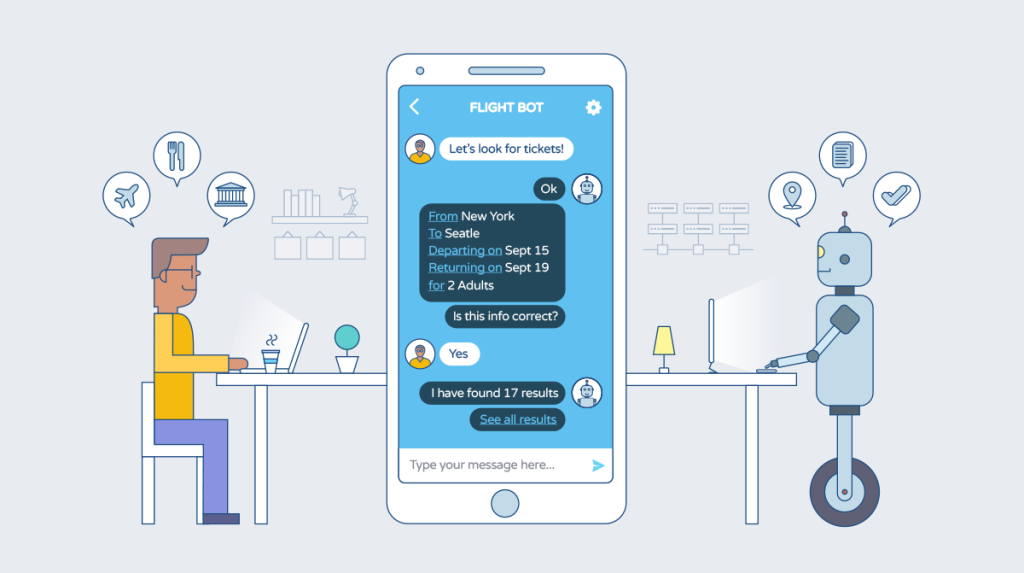Chatbots Powered by AI and Large Language Models: Revolutionizing Human Interaction
Chatbots have become an integral part of our digital experience, simplifying tasks, answering questions, and engaging users with natural, human-like conversations. With advancements in Artificial Intelligence (AI) and the advent of Large Language Models (LLMs), these bots have evolved from basic query-response systems to sophisticated tools that understand context, exhibit empathy, and even anticipate user needs. Here’s a look at how AI-driven chatbots are transforming the way we interact with technology.
What Are Large Language Models (LLMs)?
LLMs, like OpenAI’s GPT models, are advanced AI systems trained on vast amounts of text data. They learn the structure and semantics of language, enabling them to generate coherent and contextually relevant responses. Unlike traditional rule-based bots, LLM-powered chatbots can handle a broader range of topics, making them more versatile and user-friendly.
Key Benefits of AI-Powered Chatbots
1. Enhanced User Experience
LLMs provide conversational interfaces that feel natural. By understanding context, chatbots can engage in multi-turn dialogues, addressing complex queries seamlessly.
2. 24/7 Availability
These bots operate round-the-clock, offering instant support without human intervention. Businesses can provide consistent service across time zones without incurring additional costs.
3. Scalability
AI chatbots can handle thousands of interactions simultaneously, ensuring that users don’t face delays, even during peak hours.
4. Cost Efficiency
By automating repetitive tasks, companies can reallocate human resources to higher-value activities, significantly reducing operational costs.
5. Personalization
Chatbots equipped with AI can analyze user data to offer tailored recommendations, improving engagement and satisfaction.
Real-World Applications
Customer Support
Many companies use AI chatbots to resolve common customer queries, reducing the burden on human agents. For instance, virtual assistants on e-commerce platforms guide users through returns, refunds, and product inquiries.
Healthcare
Chatbots assist in preliminary diagnosis, appointment scheduling, and medication reminders, enhancing patient care.
Education
Virtual tutors powered by LLMs can explain concepts, provide learning materials, and adapt teaching methods to suit individual learning styles.
E-commerce
From product recommendations to handling checkout issues, chatbots enhance the shopping experience.
Challenges and Ethical Considerations
While LLM-powered chatbots offer immense potential, challenges remain:
– Bias and Fairness: Since LLMs learn from existing data, they may inadvertently replicate societal biases present in the training material.
– Privacy Concerns: Handling sensitive user data requires robust measures to prevent misuse or breaches.
– Over-Reliance on Automation: Missteps can occur when chatbots are tasked with decisions requiring deep understanding or emotional intelligence.
Developers and businesses must address these challenges to ensure ethical deployment and build user trust.
Future of AI Chatbots
The integration of AI chatbots with emerging technologies like voice recognition, sentiment analysis, and augmented reality holds tremendous potential. Future developments could see bots capable of:
– Detecting emotional cues to provide empathetic responses.
– Offering multilingual support with native-like fluency.
– Functioning as proactive assistants that predict user needs.
As AI technology evolves, chatbots will become even more indispensable in personal and professional contexts.
Conclusion
AI-powered chatbots represent the future of digital interaction, blending efficiency with intelligence. By leveraging LLMs, businesses and individuals can streamline processes, foster deeper connections, and enhance overall experiences. As technology advances, the role of these chatbots will only expand, making them an essential tool in the modern world. What’s your experience with AI chatbots? Let us know in the comments below!
